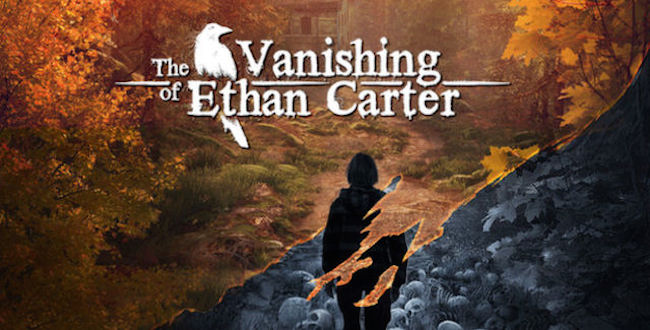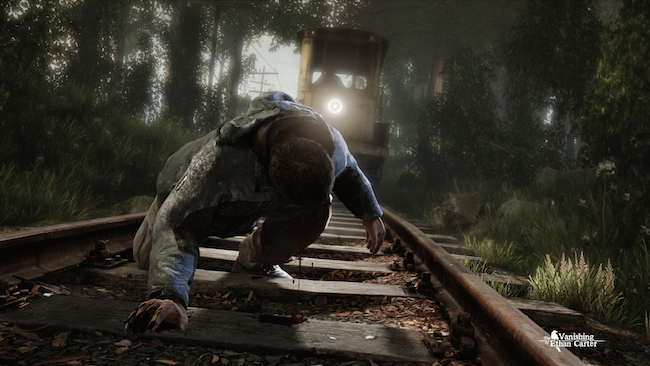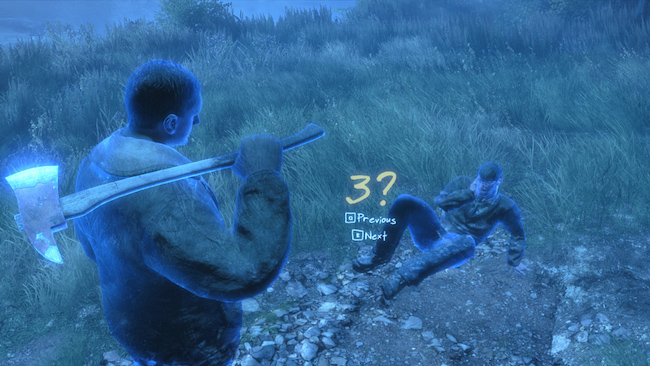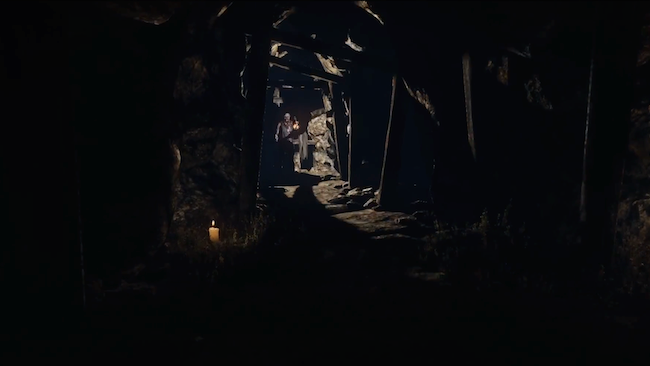
If you’ve seen a preview for The Vanishing of Ethan Carter, I won’t judge you if you had assumed this was the next big adventure game from a large, well-known studio. It’s not, however. This is a game developed by a small team of just eight people based out in Warsaw, Poland. – “The Astronauts” is what they call themselves. To be fair, they are an experienced group of game designers, with several members having been apart of “People Can Fly”; who previously worked on Painkiller, Bulletstorm and Gears of War: Judgement. What is incredible, though, are the production values of what is essentially a small independent game. It’s a testament to the passion of what is clearly a very talented team.

In The Vanishing of Ethan Carter, players take on the role of an occult-minded detective named Paul Prospero. Having received a disturbing letter from a young fan named Ethan Carter, Paul arrives to Ethan’s home of Red Creek Valley to uncover what exactly is going on. He’s not usually the kind of guy to jump at a case these days, but there was just something about Ethan’s message that he couldn’t ignore. Upon arriving, however, Paul quickly learns that things were far worse than he had imagined, when he stumbles upon a brutal murder and learns the boy has since vanished.
Above all else, and it is stated in the beginning of the game: “This game is a narrative experience that does not hold your hand.” It’s important to align expectations with this statement, and to enter with the understanding that this game is an evolution of what we’ve seen in other interactive narrative adventures such as Dear Esther and Gone Home. In my opinion, however, it steps beyond those games as it finds a balance between the immersion of environmental narrative and direct storytelling. It’s hard to talk about the story without spoilers, but I feel it’s important to clarify that this game is very heavy in metaphor, and not in a way that’s overly convoluted either. It’s so full of imagination, and ultimately achieves its goal in telling a remarkable story that addresses complex issues from the perspective of a child.

A major component in the design which makes this approach work so well is its living, breathing, open-world. As the disclaimer states, the game does not hold your hand, which means that there are no objective markers, maps, goals or anything of that sort to guide you. It’s all about organic exploration and learning what you can from the environment around you. The primary goal is to uncover a series of murders, but they can technically be discovered in any order. There are no restrictions on where you can go in the world, so you have the ability to travel wherever your instincts lead you. When you do discover a murder scene, the idea is to inspect everything you can, and restore certain elements of the environment to open what is essentially a window to the past. This is where Ethan Carter differs from similar titles as there is still plenty of direct-narrative to uncover too; providing regular validation for player assumptions.
In addition to pursuing the murder cases, the player can also uncover what is best-described as a manifestation of Ethan’s fictional writing. Personally, I would argue this was the most compelling part of the game as there are no direct answers; leaving the player to compare their surreal experiences with the metaphor-riddled notes left behind by Ethan. The problem with this approach, however, is that the interaction with the world is split solely between these two objectives. As a result, I found this discouraged additional exploration as you quickly learn there is nothing else to do once you discover two things, in what is assumed to be a core area of Red Creek Valley. In a way, I appreciate that it keeps the player moving forward, but the world is so immersive that I would’ve liked more ways to be involved with it.

The way an investigation plays out has the player locating a corpse, marking out points of interest within the immediate area, and then returning several objects to their original location. The first time you go through this process, it’s quite enthralling as you watch all the question markers pop-up on the screen, as you begin to guess what might have happened. This is also where Paul’s supernatural abilities come into it, as returning the objects brings him into sync with the victim. Once the area is set correctly, you then have to piece together a series of events in the right order to uncover what happened. I personally found the revelations rewarding, but with each subsequent investigation, I grew less interested in the process as it doesn’t provide a lot of variety; especially in contrast to the side-objectives.
The mechanics themselves are reasonably solid and serve as well as you would expect in any interactive narrative-driven game. I think it’s a definitive step up from its spiritual predecessors, even though I’ve been sitting here writing about how I wished I could have done more. It’s a game that’s on the right path, and taking the genre in a good direction. What is so difficult to overlook right now though, is the number of immersion breaking bugs which can become problematic. There were small issues such as being able to clip through walls. However, there were also bigger problems such as finding a house that would only load the inner framework, and another where I got trapped in the “past.” On both occasions, I had to quit and re-enter the game. It didn’t ruin it for me, but given the quirkiness of the title, I wasted a lot of time figuring out whether it was actually broken. It is worth noting, however, that two patches have been released already. In fact, some issues have been resolved, so I don’t think they’ll hinder the game forever.

Red Creek Valley is one of the most compelling game words I’ve ever been apart of, and it just blows my mind to know the game was developed by only eight people. If you’re interested about learning how they achieved such incredible graphical fidelity, you can read more about it on their blog: here. To surmise it though, the team did a lot of on-site shooting and conversion; essentially creating a fictional world from real-world locations and objects. As such, there is not the same repetition you’d usually encounter in games, but instead a lush variety to every aspect of the world, which feels utterly alive as the wind passes by. This is further supported by intuitive sound design, which I could only describe as being at zen with the world around it. Ethan Carter is a genuine accomplishment in world design.
I really appreciate how much the world has to say for itself, further demonstrating the strength of environmental narrative in these first-person, narrative-driven adventure games. Furthermore, I appreciate that the writers were willing to step beyond the world they created, to explore some “out-there” fictional components, which felt even more realised because of the believable world that supported them. I’d go as far as to say that one of these bizarre scenarios is absolutely my favourite gaming moment of 2014. It’s a sensory experience, and I can’t personally fault it in that regard. The developers highly recommend playing alone at night, with headphones, and I could not agree more!
 Delivers a mystery that’s compelling to pursue
Delivers a mystery that’s compelling to pursue
 Fantastic exploration of fiction and metaphor
Fantastic exploration of fiction and metaphor
 Definitive evolution for a progressive genre
Definitive evolution for a progressive genre
 A genuine accomplishment in world design
A genuine accomplishment in world design
 Audio/visual presentation is a sensory treat
Audio/visual presentation is a sensory treat
 Crime-scene investigation feels repetitive
Crime-scene investigation feels repetitive
 Interaction with the world can feel limited
Interaction with the world can feel limited
 Game breaking bugs are currently a problem
Game breaking bugs are currently a problem
Building upon the narrative-focused approach of games such as Dear Esther and Gone Home, the small, talented team at The Astronauts have taken the genre one definitive step forward with The Vanishing of Ethan Carter. It’s an experience filled with compelling mysteries, characters, and a lot of fascinating metaphors to reflect on. It’s got problems, it’s not for everyone, but it is one of the most convincing game worlds I’ve ever been apart of; to the point I wished there was even more to it. Ethan Carter is a testament to the possibilities of independent talent, and is so engrossing I found myself unable to stop playing until the credits rolled. It’s got a few bugs to iron out too, but the team is reacting quickly, which means I wholeheartedly recommend it to anyone seeking narrative-driven experiences.











